
This web page list the different way you can use the PhET Simulations.
- Subject:
- Agriculture & Natural Science
- Biology
- Chemistry
- Physical Science
- Physics
- Date Added:
- 11/02/2011
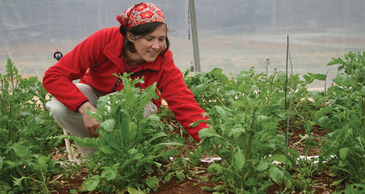

This web page list the different way you can use the PhET Simulations.

Insert channels in a membrane and see what happens. See how different types of channels allow particles to move through the membrane.

Insert channels in a membrane and see what happens. See how different types of channels allow particles to move through the membrane.

Discover what controls how fast tiny molecular motors in our body pull through a single strand of DNA. How hard can the motor pull in a tug of war with the optical tweezers? Discover what helps it pull harder. Do all molecular motors behave the same?
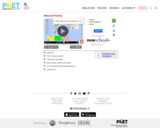
When is a molecule polar? Change the electronegativity of atoms in a molecule to see how it affects polarity. See how the molecule behaves in an electric field. Change the bond angle to see how shape affects polarity. See how it works for real molecules in 3D.

When is a molecule polar? Change the electronegativity of atoms in a molecule to see how it affects polarity. See how the molecule behaves in an electric field. Change the bond angle to see how shape affects polarity. See how it works for real molecules in 3D.
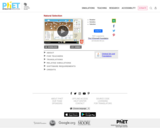
Explore natural selection by controlling the environment and causing mutations in bunnies.

Stimulate a neuron and monitor what happens. Pause, rewind, and move forward in time in order to observe the ions as they move across the neuron membrane.
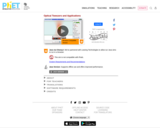
Did you ever imagine that you can use light to move a microscopic plastic bead? Explore the forces on the bead or slow time to see the interaction with the laser's electric field. Use the optical tweezers to manipulate a single strand of DNA and explore the physics of tiny molecular motors. Can you get the DNA completely straight or stop the molecular motor?
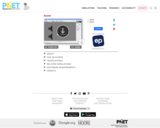
This simulation lets you see sound waves. Adjust the frequency, volume, and harmonic content and you can see and hear how the wave changes. Move the listener around and hear what she hears.

Explore stretching just a single strand of DNA using optical tweezers or fluid flow. Experiment with the forces involved and measure the relationship between the stretched DNA length and the force required to keep it stretched. Is DNA more like a rope or like a spring?

What happens when sugar and salt are added to water? Pour in sugar, shake in salt, and evaporate water to see the effects on concentration and conductivity. Zoom in to see how different sugar and salt compounds dissolve. Zoom in again to explore the role of water.

What happens when sugar and salt are added to water? Pour in sugar, shake in salt, and evaporate water to see the effects on concentration and conductivity. Zoom in to see how different sugar and salt compounds dissolve. Zoom in again to explore the role of water.

How do greenhouse gases affect the climate? Explore the atmosphere during the ice age and today. What happens when you add clouds? Change the greenhouse gas concentration and see how the temperature changes. Then compare to the effect of glass panes. Zoom in and see how light interacts with molecules. Do all atmospheric gases contribute to the greenhouse effect?
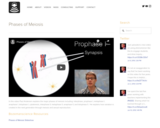
In this video Paul Andersen explains the major phases of meiosis including: interphase, prophase I, metaphase I, anaphase I, telophase I, cytokinesis, interphase II, metaphase II, anaphase II, and telophase II. He explains how variation is created in the next generation through meiosis and sexual reproduction.
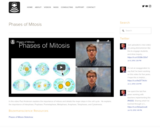
In this video Paul Andersen explains the importance of mitosis and details the major steps in the cell cycle. He explains the importance of Interphase, Prophase, Prometaphase, Metaphase, Anaphase, Telophases, and Cytokinesis.

More detail on the Calvin Cycle and Photorespiration
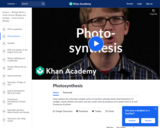
Hank explains the extremely complex series of reactions whereby plants feed themselves on sunlight, carbon dioxide and water, and also create some by products we're pretty fond of as well.
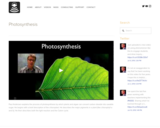
Paul Andersen explains the process of photosynthesis by which plants and algae can convert carbon dioxide into useable sugar. He begins with a brief description of the chloroplast. He describes the major pigments in a plant (like chlorophyll a and b). He then describes both the light reaction and the Calvin cycle.
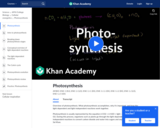
Overview of photosynthesis